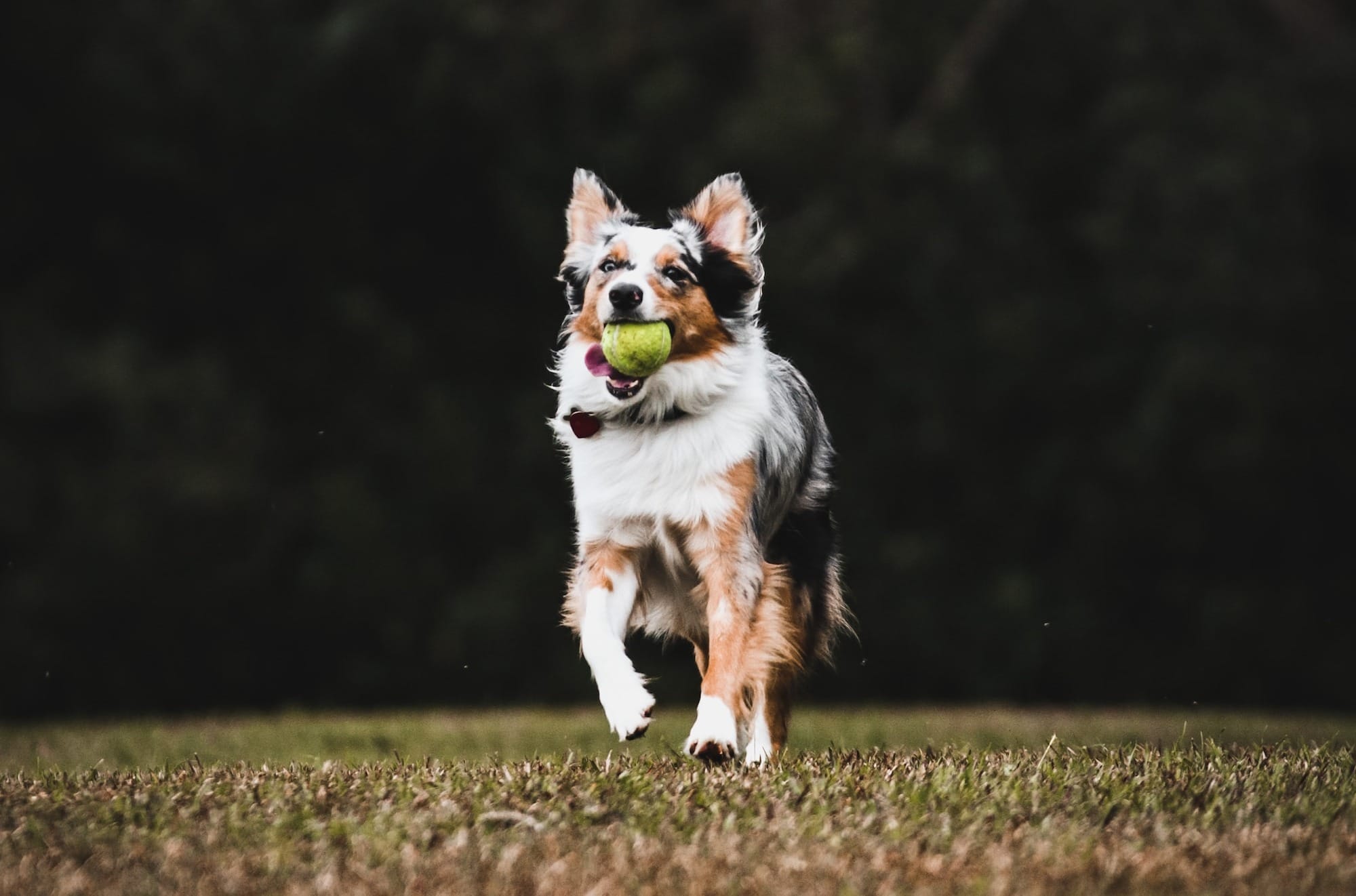The Australian Shepherd, often affectionately known as the "Aussie," is a breed renowned for its vibrant energy, intelligence, and striking appearance. Originating in the United States, despite its name, this breed has become a beloved companion and working dog worldwide. Characterized by their beautiful, multi-colored coats and sharp, expressive eyes, Australian Shepherds are as intelligent as they are agile, often excelling in obedience, herding, and agility trials.
Understanding the growth timeline of an Australian Shepherd is crucial for owners and breeders alike. It's not just about knowing when they will reach their full size; it’s also about understanding their developmental stages. Each stage brings unique needs in terms of nutrition, training, and health care. By comprehensively understanding their growth and development, owners can ensure that these lively and affectionate dogs receive the care and attention they need to thrive throughout their lives.

General Growth Patterns of Australian Shepherds
Australian Shepherds are a medium-sized breed, with males typically standing between 20 to 23 inches at the shoulder and females slightly smaller at 18 to 21 inches. In terms of weight, males usually range from 50 to 65 pounds, while females tend to be between 40 to 55 pounds. They possess a robust and athletic build, characterized by a strong, well-balanced body that exudes agility and endurance.
The growth of Australian Shepherds can be divided into several phases, starting from puppyhood, moving through adolescence, and culminating in adulthood. Puppies experience rapid growth in their first six months, where they develop physically and begin to showcase their energetic and playful nature. The adolescent phase, from 6 to 12 months, sees a continuation of physical growth but at a slower pace, coupled with significant behavioral changes. They typically reach their full size between 12 to 18 months, but it’s not uncommon for their growth to continue subtly up to 2 years.
Several factors influence the growth of Australian Sheperds. Genetics plays a crucial role, as it determines their potential size and physical traits. Nutrition is equally important; a balanced diet tailored for active, medium-sized breeds supports healthy growth. Lastly, the environment, including physical activity and living conditions, can significantly impact their development. A healthy, stimulating environment coupled with regular exercise promotes optimum growth and well-being.
Understanding these growth patterns is essential for providing appropriate care at each stage of an Australian Shepherd's development, ensuring they grow into healthy, well-adjusted adults.
Puppy Stage: Birth to 6 Months
The first six months of an Australian Shepherd puppy's life are a period of rapid growth and significant change, both physically and behaviorally.
Physical Changes
Australian Shepherd puppies are born with their eyes and ears closed, relying entirely on their mother. They typically open their eyes within 10-14 days and begin to explore their surroundings. By the third week, they start to wobble around and play with their littermates. During this stage, their teeth start to come in, and they gradually wean off their mother's milk.
Between two to six months, Australian Shepherds undergo remarkable physical development. Their rate of growth is swift; they gain weight and size noticeably each week. This is also the time when their unique coat colors and patterns become more pronounced. By the end of six months, they might reach about half of their adult weight and size.
Behavioral Changes
This stage is crucial for socialization and early training. Puppies are naturally curious and highly impressionable. Exposure to various people, pets, sounds, and environments is essential to develop a well-adjusted temperament. Basic training, including housebreaking and simple commands like 'sit,' 'stay,' and 'come,' should begin during this period.
Key Milestones
- 3-4 weeks: Start of socialization with humans and other animals.
- 6-8 weeks: First vaccinations.
- 8-12 weeks: Prime socialization period, ideal for exposure to diverse experiences.
- 4-6 months: Teething and chewing phase; introduction of more structured training.
Nutrition and Care Tips
- Diet: Feed high-quality puppy food formulated for medium breeds. Puppies have different nutritional needs than adult dogs, requiring more protein, fat, and calories.
- Feeding Schedule: Consistent feeding times help with house training. Puppies typically eat three to four times a day.
- Veterinary Care: Regular check-ups are crucial. Keep up with vaccination and deworming schedules.
- Exercise: Provide moderate exercise to support physical development. Avoid strenuous activities to protect their growing bones and joints.
During these first six months, providing a balanced diet, consistent training, and positive social experiences are key to nurturing a healthy, well-behaved Australian Shepherd puppy.

Adolescent Stage: 6 to 12 Months
The adolescent stage, spanning from 6 to 12 months, is a crucial period in the development of an Australian Shepherd, marked by continued growth and significant behavioral changes.
Continuation of Growth and Physical Development
During this phase, Australian Shepherds continue to grow in size and strength, though the rate of growth starts to slow down compared to the initial six months. They will gradually reach closer to their adult height, with their weight continuing to increase steadily. It's also the time when their coat develops its full texture and color pattern, showcasing the breed's distinctive appearance.
Behavioral Changes During Adolescence
Adolescence in Australian Shepherds is characterized by increased independence and a surge in energy levels. This period may bring about new challenges in behavior: they may exhibit stubbornness or selective hearing, a normal part of testing boundaries during this developmental stage. Adolescents might also show higher levels of excitement and may get easily distracted.
Training and Socialization Tips
- Consistent Training: Continue with consistent training sessions, reinforcing the basic commands learned during puppyhood. This helps in managing any unruly behavior and in maintaining discipline.
- Advanced Training: Introduce more complex commands and tricks to keep their agile minds engaged. Australian Shepherds excel in activities like agility training, which can be started during this time.
- Positive Reinforcement: Continue using positive reinforcement methods. Rewards, praise, and playtime are effective in encouraging desirable behavior.
- Socialization: Keep socializing your dog. Exposure to different people, animals, and environments should continue to ensure they develop into well-rounded adults.
- Exercise: Adequate physical exercise is essential to channel their energy positively. Engage them in running, hiking, or playing fetch.
- Patience and Understanding: Understand that adolescence is a phase of exploration and learning. Patience and consistency are key in guiding them through this stage.
The adolescent stage is a formative period in an Australian Shepherd's life. Providing them with structured training, continued socialization, and appropriate exercise can effectively manage the challenges of this stage and support their transition into well-adjusted adult dogs.
Transition to Adulthood: 12 to 18 Months
As Australian Shepherds move into the 12 to 18 months age range, they transition from adolescence to adulthood. This period is marked by a slowing down of physical growth and the maturation of their personality and physical traits.
Slowing Down of Physical Growth
By the time they reach 12 months, Australian Shepherds have achieved most of their physical growth. The growth rate noticeably slows down as they approach their adult size. Although they might gain some additional weight or fill out a bit more, the major changes in height and length are typically complete. This is the time when owners can anticipate what their dog’s final size and stature will be as an adult.
Development of Adult Coat and Physical Traits
Their coat, one of the hallmark features of the breed, reaches its full development during this stage. The texture, length, and color patterns become more pronounced and vivid. Other adult physical traits, such as the broadening of the chest and the strengthening of muscles, become more evident, showcasing the breed's athletic build and stamina.

Finalizing Training and Establishing Routines
- Consolidating Training: This is a critical period for reinforcing the training and behavior expectations set during their younger months. Solidifying obedience training and manners ensures well-behaved adult behavior.
- Routine Establishment: Establishing a consistent daily routine, including regular exercise, feeding, and playtime, helps in providing stability and security. Australian Shepherds thrive on routine, and a predictable schedule can aid in reducing any potential anxiety or behavioral issues.
- Continued Socialization and Exercise: Maintain socialization efforts and provide ample physical and mental exercise. As working dogs, Australian Shepherds need activities that engage both their body and mind, such as advanced agility training, herding trials, or interactive play sessions.
- Health Care Transition: Transition to an adult diet and adjust portion sizes according to their activity level to prevent obesity. Continue with regular veterinary check-ups to monitor their overall health and catch any developing issues early.
The transition to adulthood is a pivotal time for Australian Shepherds. Proper care, continued training, and a stable routine during this stage lay the foundation for a healthy, happy, and well-adjusted adult life.
Enhance Your Australian Shepherd's Growth Journey with Fi: The Smart Collar for Every Stage
As you navigate the various growth stages of your Australian Shepherd, from a lively puppy to a robust adult, prioritizing their safety and wellbeing becomes crucial.
This is where Fi steps in - a state-of-the-art dog collar designed for the active and adventurous nature of Australian Shepherds. Whether it's managing their boundless energy during adolescence or ensuring their safety in adulthood, Fi is your ideal companion.
Equipped with advanced GPS tracking, Fi allows you to monitor your Australian Shepherd's location, giving you peace of mind during their explorations. The invaluable geofencing feature alerts you if they wander beyond predefined safe zones, a vital tool for these energetic and curious dogs.
Additionally, Fi's activity monitoring capabilities help you keep track of their fitness levels, catering to the breed's need for regular physical activity. Opting for Fi means ensuring that your Australian Shepherd is safeguarded and thriving at every growth phase. Journey confidently with your Australian Shepherd, with Fi by your side.

Reaching Full Maturity: 18 Months to 2 Years
Australian Shepherds typically reach their full physical maturity between 18 months and 2 years. This stage signifies the culmination of their growth and the onset of their adult life.
Full Size Achievement
By the age of 18 months, Australian Shepherds have generally reached their full size in terms of height and length. However, they may continue to gain muscle and fill out in terms of their overall body condition until they are about 2 years old. This gradual progression to their adult physique is accompanied by the full development of their stunning coat and a more defined, muscular build, reflective of their breed's characteristics.
Behavioral Maturation
Behaviorally, this period marks a significant transition. The high-energy, sometimes erratic behavior of puppyhood and adolescence gives way to a more settled and stable temperament. Australian Shepherds, known for their intelligence and eagerness to please, become more predictable and reliable in their responses. Their training solidifies, and they often exhibit a heightened sense of responsibility and alertness, characteristic of their herding heritage.
Health Screenings and Adult Care
Regular Health Screenings: As they transition into adulthood, it's crucial to begin regular health screenings. This includes checks for common breed-specific issues such as hip dysplasia, elbow dysplasia, and certain eye conditions.
- Nutritional Needs: Adjust their diet to suit an adult dog's needs, focusing on maintaining a healthy weight and supporting their active lifestyle.
- Continued Exercise and Mental Stimulation: Maintain regular exercise routines to keep them physically fit and mentally sharp. Activities like hiking, advanced obedience training, and dog sports are beneficial.
- Dental Care: Regular dental care becomes increasingly important to prevent periodontal disease, which can affect dogs as they age.
Reaching full maturity is a significant milestone in an Australian Shepherd's life. Continuing with proper care, regular health checks, and a stable routine ensures they remain healthy, happy, and active throughout their adult years.
Factors Affecting Growth and Development
The growth and development of Australian Shepherds are influenced by a variety of factors, with genetics, nutrition, and exercise playing pivotal roles.
Genetic Factors and Their Impact on Growth
Genetics largely determine the potential size and physical traits of an Australian Shepherd. Inherited genes from the puppy's parents can influence everything from their eventual height and weight to their general physique and coat characteristics. Even aspects like growth rate and maturation time can be genetically predisposed. Understanding a puppy's lineage can offer insights into their expected growth and developmental trajectory.

Importance of Nutrition and Exercise
Proper nutrition is essential for healthy growth. Puppies require diets rich in proteins, fats, and essential nutrients to support their rapid development. As they grow, their dietary needs change, and it's important to adjust their food intake to prevent overfeeding and obesity, which can hinder proper growth and lead to health issues.
Regular exercise is equally important. It not only supports physical development by strengthening muscles and bones but also plays a crucial role in mental health. Adequate exercise helps in managing the breed's high energy levels and prevents behavioral issues.
Recognizing and Addressing Health Concerns
Certain health issues can affect an Australian Shepherd's growth and development. Conditions like hip dysplasia or growth abnormalities should be monitored and addressed early. Regular veterinary check-ups can identify potential problems before they significantly impact growth. Proactive care, including vaccinations, deworming, and flea and tick prevention, contributes to overall health, thereby supporting normal growth and development.
In summary, an Australian Shepherd's growth and development are influenced by a combination of genetic factors, nutrition, and exercise, along with vigilant health care to address any concerns that may arise.
Conclusion
Understanding the growth timeline of an Australian Shepherd is key to providing them with the care and attention they need at each stage of their development. From the rapid growth of their puppy months, through the exploratory adolescent phase, to reaching full maturity around 2 years, each period has unique requirements in terms of nutrition, exercise, training, and health care.
Recognizing and responding to these needs ensures that your Australian Shepherd develops into a healthy, well-adjusted adult. Responsible and informed ownership, grounded in an understanding of their growth timeline, allows these intelligent and energetic dogs to thrive and become loyal, loving companions.
FAQs
- At what age do Australian Shepherds reach their full size?
- Australian Shepherds typically reach their full height by 12 to 18 months, but they may continue to fill out and gain muscle until about 2 years of age.
- How big can I expect my Australian Shepherd to get?
- Male Australian Shepherds generally grow to be about 20 to 23 inches tall and weigh between 50 to 65 pounds, while females are slightly smaller, standing 18 to 21 inches tall and weighing 40 to 55 pounds.
- What are the key stages of growth in an Australian Shepherd?
- The key stages include the puppy stage (birth to 6 months), where rapid growth occurs, the adolescent stage (6 to 12 months), featuring continued growth and behavioral changes, and the transition to adulthood (12 to 18 months), where growth slows down and adult traits develop.
- How can I ensure my Australian Shepherd is growing properly?
- Regular veterinary check-ups, providing balanced nutrition tailored to each growth stage, and ensuring adequate exercise are essential for healthy growth.
- Are there any specific health concerns to watch for during my Australian Shepherd's growth?
- Common concerns include hip and elbow dysplasia, as well as certain eye conditions. Regular health screenings can help identify and address these issues early.
- When do Australian Shepherds mature behaviorally?
- Behavioral maturation typically occurs as they transition into adulthood, around 18 months to 2 years, when they develop a more settled and predictable temperament.
- What is the importance of understanding the growth timeline of an Australian Shepherd?
- Understanding this timeline helps owners provide appropriate care at each developmental stage, ensuring the physical and mental well-being of their Australian Shepherd.




